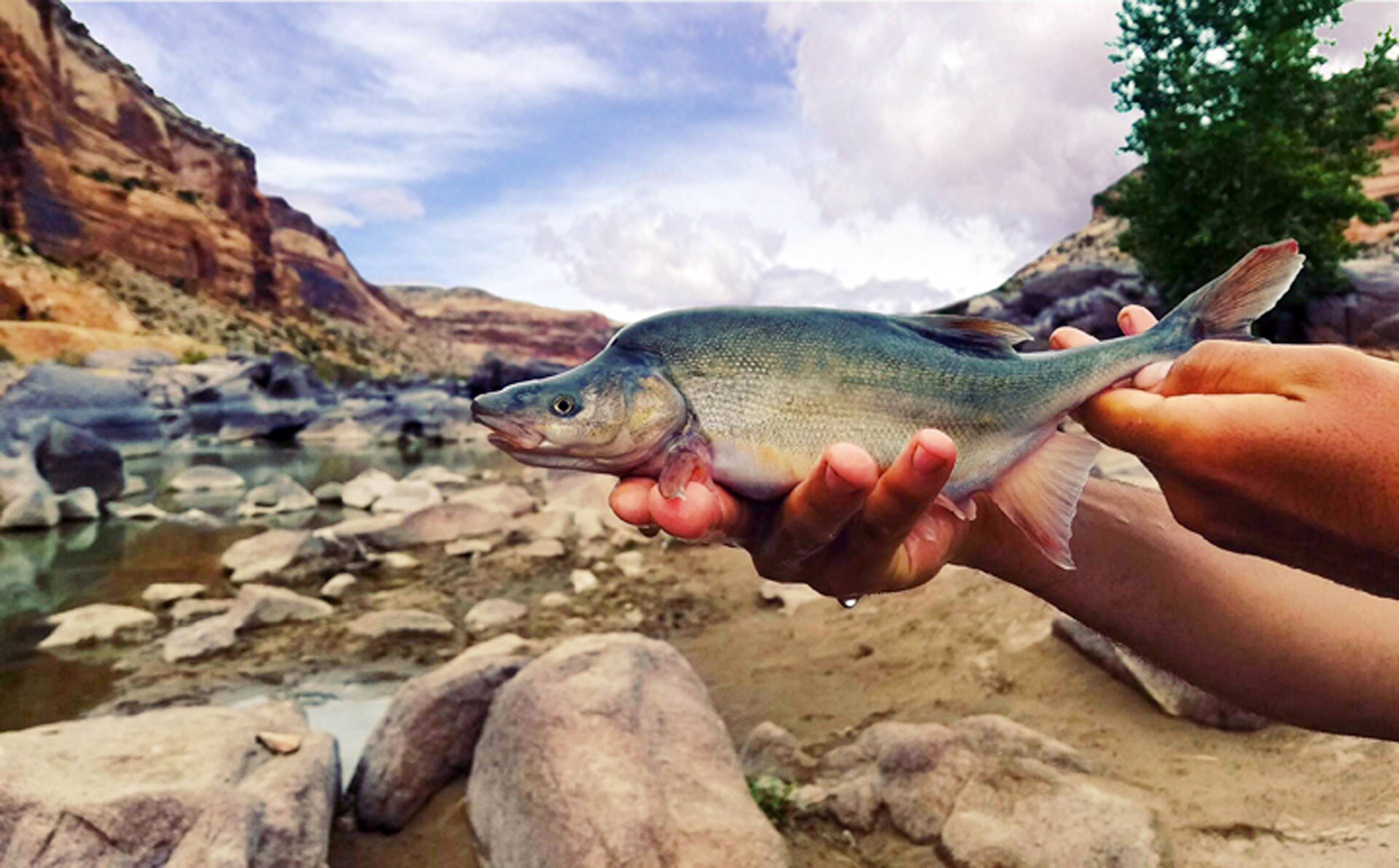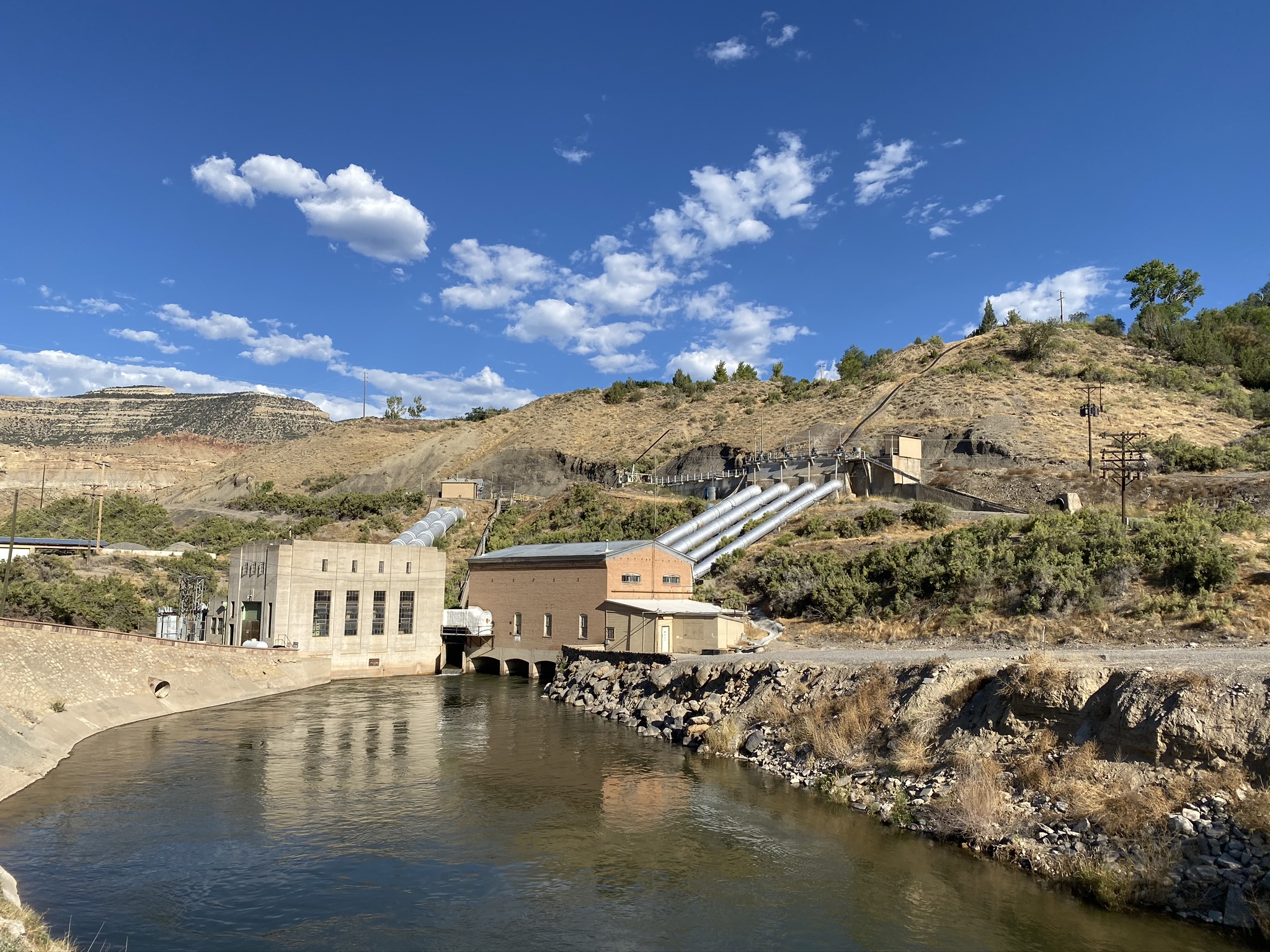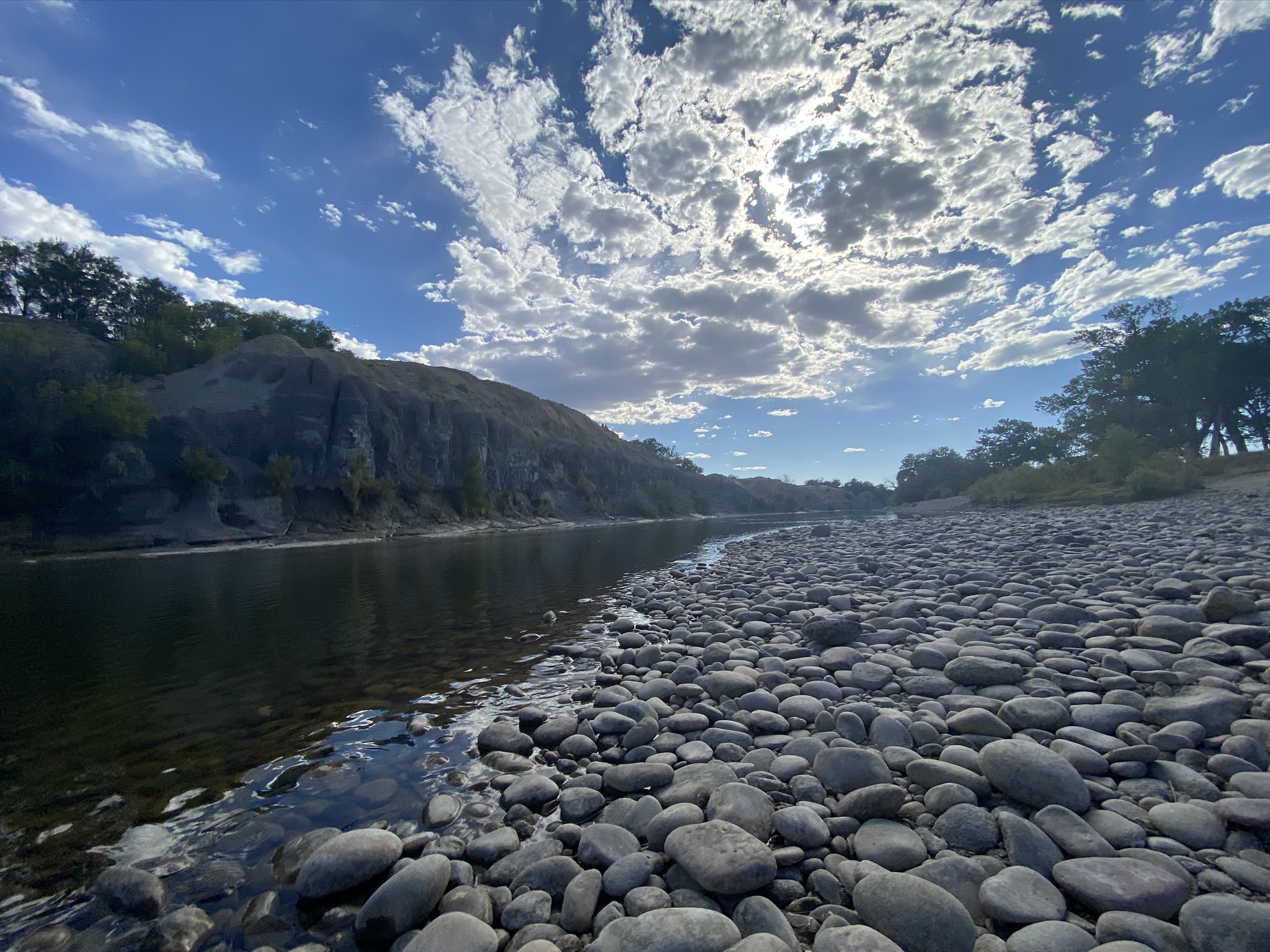Why a collaborative approach to restoring Colorado River flows is the way of the future
Every spring, the Colorado River swells with runoff. After passing Palisade’s vineyards and orchards—where many irrigators divert water for agricultural purposes—the river skirts the base of the Book Cliffs formations and courses through Grand Junction before reaching the confluence of the Colorado and the Gunnison Rivers west of town. This critical section is the “15-Mile Reach,” and it is key to both conservation and commercial uses—it’s also in critical danger.
Las Colonias
Fifteen miles may not seem like much out of the 1,400 river miles that make up the mighty river, but the 15-Mile Reach is at the heart of the upper Colorado River Basin, where water rights supporting agricultural, municipal, recreational, and industrial activities are worth an estimated $300 billion a year. It is also critical habitat for four native endangered fish species—Colorado Pikeminnow, Humpback Chub, Bonytail, and Razorback Sucker—that are federally protected.
Like most water systems in the West, the 15-Mile Reach is under increasing stress. According to data collected by the U.S. Department of the Interior, the Colorado River basin has experienced its lowest period of inflow in more than 100 years over the last two decades. Reservoir storage has also declined from nearly full to about half of capacity in those years.
As populations increase and climate warms, river stretches like the 15-Mile Reach will likely experience more extended periods of low flow in the future, say experts. Local water managers like Mark Harris at the Grand Valley Water Users Association (GVWUA) and Max Schmidt of the Orchard Mesa Irrigation District (OMID) work hard to ensure every drop of runoff and reservoir water is stretched to meet crop irrigation and municipal needs throughout the year.
Declining river flows as a result of climate and high demand can temporarily dry segments of the river entirely. Schmidt recalls in 2013 when, after a disastrously dry winter, he “walked across the river without getting wet.” “It was just bare rocks,” he says. “I’ve been in Grand Junction 30 years; I’d never seen anything like it.”
More recently, in 2018 and 2020, low snowpack and warmer temperatures caused precipitously low flows. “In just the last three years [2018–2020], we’ve had two pretty severe drought years,” says Don Anderson, who serves as instream flow coordinator for the Upper Colorado River Endangered Fish Recovery Program. The effects are compounded when dry years fall close together, Anderson explains. “With multiple dry years in a row, you exhaust reservoir storage that would otherwise be available to help during periods of water scarcity.” The result is abysmally low flows through the 15-Mile Reach.
“For the fish, the 15-Mile Reach is a relatively short but really important stretch of the river,” Anderson explains. It provides ideal conditions for all four endangered fish species and is particularly ideal spawning habitat for both the Colorado Pikeminnow and the Razorback Sucker. Flows typically dip twice yearly—in early spring when snow hasn’t begun to melt, and in late summer through early fall, the driest part of the year
.
A Humpback Chub, one of the four endangered species. Photo taken by Travis Francis, U.S. Fish and Wildlife Service
Navigating Complexity, Catalyzing Solutions
With so many complex factors and needs affecting streamflows, keeping vulnerable stretches of the Colorado like the 15-Mile Reach flowing for endangered fish—and for people, agriculture, and businesses—has become more challenging and harder to arrange, says Kate Ryan, senior staff attorney at the Colorado Water Trust. Supporting streamflows requires navigating complex water laws while planning for agile, collaborative solutions over the long term, says Ryan.
Over the past 15 years, the Water Trust has served as a catalyst for responsive and collaborative solutions for the 15-Mile Reach and elsewhere—implementing flow restoration projects that have returned nearly 20,000 acre-feet of water to 588 miles of rivers and streams across Colorado, uniting stakeholders with diverse and sometimes seemingly oppositional interests.
The Water Trust considers their work in the 15-Mile Reach among their most ambitious. Implemented in 2019–2020 after years of exploratory work, the Water Trust’s 15-Mile Reach project includes a novel agreement with GVWUA and OMID—implemented with assistance from the Upper Colorado Endangered Fish Recovery Program and the Bureau of Reclamation—to increase flows in the 15-Mile Reach during critical periods for spawning and foraging
.
Grand Valley Power Plant
In order to deliver water to the 15-Mile Reach, stakeholders identified an opportunity to deliver water for generating hydroelectricity at the Grand Valley Power Plant (GVPP). The plant operates just above the 15-Mile Reach and provides energy to the town of Palisade. Using a novel approach a solution was developed that leases stored water and then delivers it to the hydroelectric plant, which then returns it to the Colorado River’s 15-mile reach to boost depleted flows.
Grand Valley Diversion Dam
With the help of Bonneville Environmental Foundation’s (BEF) Business for Water Stewardship (BWS) Program, the 15-Mile Reach project has attracted a slew of private-sector funders providing funds to lease the water needed, including Coca-Cola North America, Intel Corporation, Danone, and Coors Seltzer—companies who see the short and long-term value of such collaborative solutions. “Coca-Cola looks for projects like the 15-Mile Reach—locally relevant projects in areas of significant water stress, such as the Upper Colorado River Basin, projects that are good for ecosystems and also good for the communities where our business operates,” says Jon Radtke, water sustainability program manager at Coca-Cola North America.
Additionally, the Walton Family Foundation will contribute funds toward rebuilding the power plant, which is now over 90 years old, providing a foundation for the 15-Mile Reach flow restoration program in the future. “Rebuilding the power plant will continue to coincidentally benefit the environment and agriculture for years and years,” says Schmidt. “This project recognizes the significance of the power plant and its potential to expand and enhance outcomes in the future.” It’s a unique example of simultaneously creating low cost, carbon free electricity while restoring flows to a critical reach of one of the world’s most famous rivers.
One Water, Diverse Stakeholders, Multiple Benefits
Above the 15-Mile Reach, the biggest diversion of water is for agricultural irrigation—for wine grapes, fruit orchards, hay and wheat production. “Oftentimes the only water that’s running down the river is water released to irrigators,” explains Harris. Although agricultural interests divert the lion’s share of the water, says Anderson, “they’re also key partners and working with us to try to sustain the flows in the 15-Mile Reach as best we can for our fish.”
The project truly honors the needs of all stakeholders, says Harris. “This project has done an exceptional job honoring the needs of diverse stakeholders.”
Although most stakeholders are open to collaboration, it often takes a lot of work to find the sweet spot where everyone wins, says Harris. “The people that GVWUA serves have both real and perceived concerns about anyone’s search for additional water—for environmental purposes, for endangered species, for recreation or aesthetic purposes.” Increasingly across the West, stakeholders are recognizing that advances can’t come at anyone’s expense—and environmental and fish benefits cannot negatively impact agricultural water users or municipalities.
James Robb State Park
Todd Reeve, BEF’s Chief executive Officer, agrees. “This project’s diverse and not predictable cast of players represents a new norm.” BEF formed the Business for Water Stewardship network in 2017. BWS has supported over 80 projects nationwide, restoring over 19 billion gallons of water. Reeve has worked closely with the Water Trust on the 15-Mile Reach project. “It’s a new paradigm, one that engages different sectors, one that recognizes that the private sector can be a catalyst for multi-benefit outcomes for the environment, communities, and irrigators.”
Coca-Cola also values the project’s collaborative, multi-benefit approach, says Radtke. “This project has multiple benefits—for fish, green energy, farmers, and communities—and many interests are coming together across sectors to make it happen,” says Radtke.
For Coors Seltzer, the 15-Mile Reach helps the company reach goals of restoring at least one billion gallons of water to rivers by the end of 2021. Molson Coors launched a new product line, Coors Seltzer, in October with a mission to help fund investments in restoration and conservation efforts in iconic river basins, like the Colorado River, including on the 15-Mile Reach. For every 12-pack of Seltzer sold, the company will restore 500 gallons of clean water to America’s rivers across 16 river basins in 14 states.
A Model Approach for Now — and for the Future
As Colorado’s population continues to increase and the state economy grows across sectors, keeping up with the need to protect all beneficial uses and the environment at the same time is critical, says Jojo La. An endangered species policy specialist for the Colorado Water Conservation Board (CWCB), La says a joint approach is critical with cross-sector problem-solving on the 15-Mile Reach, a model for the future.
Agreements like this are years in the making, with research, facilitated conversations, extensive legal work, and cultivated trust-building among stakeholders underway for nearly a decade. “So many diverse partners are involved in helping to sustain flows in that 15-Mile Reach,” remarks Anderson. Because of that, he believes that the project is an important model of collaboration for others.
“For a very long time, water development and environmental interests were seemingly opposed to one another,” says La. “Stakeholders didn’t think those interests could go together. But one exists only with the other.” In Colorado, she notes, it’s powerful to see how water development or consumptive use depends on projects that bring more water to the streams. “It makes people find solutions that didn’t exist before.”
Beyond species recovery, the fish and water in the 15-Mile Reach are also part of our Colorado identity, says Jojo La, an endangered species policy specialist for the Colorado Water Conservation Board (CWCB). “The endangered fish are part of our Colorado heritage. The fish represent our flowing waters, why we live and recreate in our state.” Without the 15-Mile Reach releases, streamflows dip dangerously low for water recreationists, including anglers, paddlers, tubers, and rafters, too.

Water in the 15-Mile Reach protects a way of life for so many people in the Grand Valley, Anderson points out. “The more successful we are in terms of recovering the endangered fish, the less likely we will reach a point where more drastic measures are needed.” the 15-Mile project helps ensure that farmers can “continue doing what they’re doing as they have in the past, without having to worry that the hammer of the Endangered Species Act is going to interfere.”
The Water Trust made it possible to “have all of these people in the room where not too many years ago, that level of candid conversation would have been impossible,” says Harris. Without that level of productive conversation, he reflects, solutions like this would not be possible. “When it comes to water, we have to recognize that nobody suffers alone, nobody gains alone,” says Schmidt. “You can accomplish a lot when everyone wins.”









